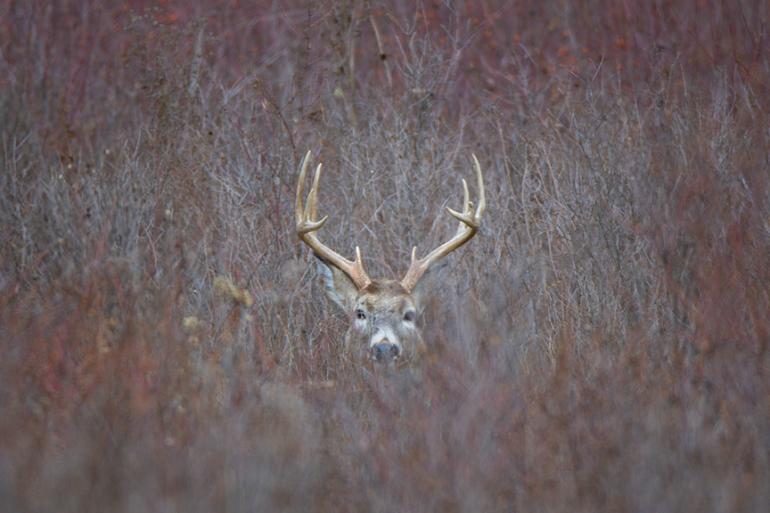Bam Bambi
With a husky snort, the deer’s tawny frame turns, and all you see is a giant white leaf blowing away. Busted, yet again, by the wily white-tailed deer. Your hour-long stalk is over, your day done. And this wasn’t even an ambitious stalk—that dancing flag rose not from a burly five-point buck, but off the rump of a doe.
Distance and terrain make a world of difference, of course, but one thing’s for sure: whitetails are sharp. One wrong move and you’re made. And though whiteys are the most common of all deer in North America, in Montana they play second fiddle to mule deer, which not only outnumber them, but have a more expansive range. However, whitetails are expanding, both in number and in range, across the state. In fact, with our long general season and expansive public- and private-land hunting opportunities, Montana is becoming well-known for its whitetail hunting.
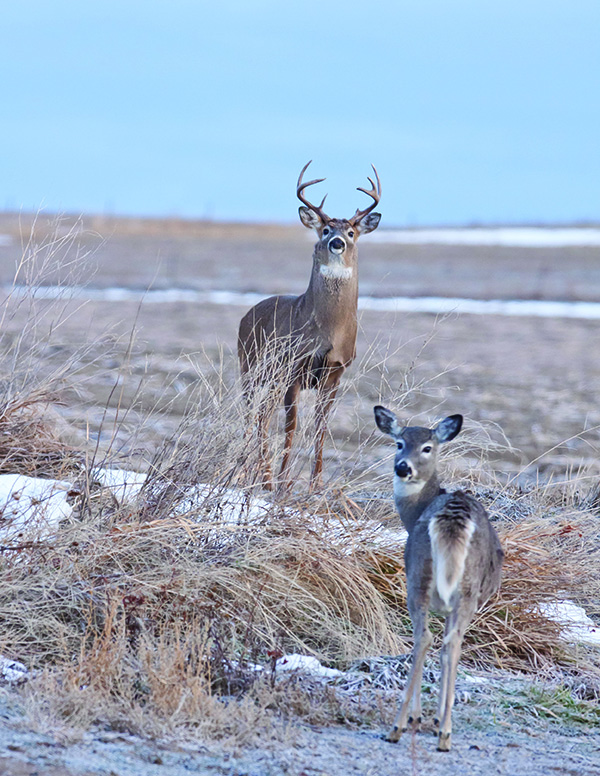 Habitat
Habitat
For folks who watch cable-TV hunting shows, Montana might not seem like it possesses typical whitetail-deer habitat. However, whitetails are adaptable, and in Montana can be found on the prairies and even in high-mountain terrain. Additionally, much of Montana is replete with very typical Western whitetail habitat of riverbottoms and riparian areas intermixed with agricultural fields and natural meadows.
Though their habitat might be different than Midwest whitetails, those found in Montana are still as fidgety, cautious, and skittish as their flatland relatives. Hunters choosing to stalk through Montana’s river bottoms will often see only the telltale flash of white as deer flee through the crunchy autumnleaves. In evergreen forests, wary whitetails often slip away in the dense stands without even being noticed.
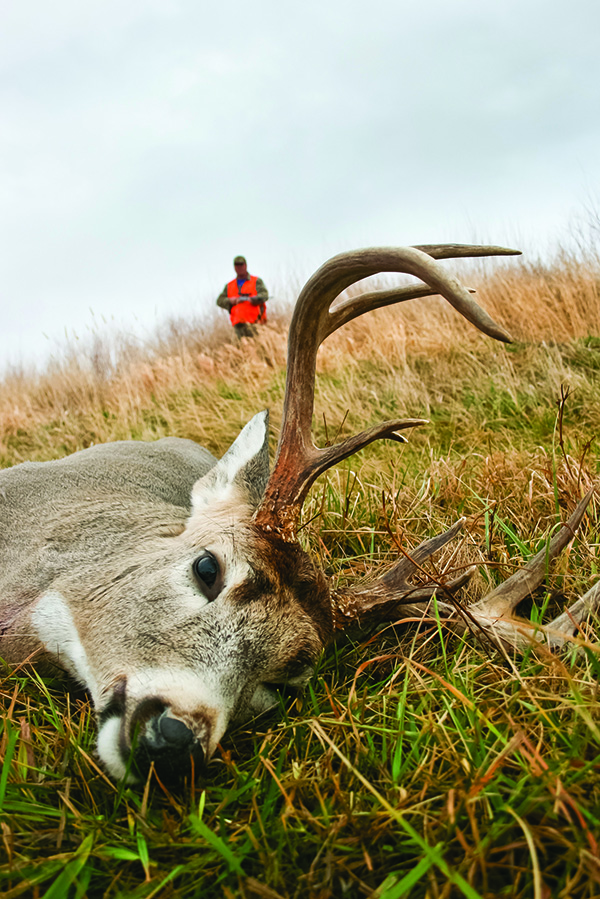 Behavior
Behavior
Whitetail deer tend to travel less than mule deer and their routes can be more predictably patterned as they move from feeding grounds to water to bedding areas. They tend to be less apt to move in herds than mule deer, but it’s still common to find groups of whitetails feeding in alfalfa fields and grassy meadows. Like mule deer, whitetail bucks rut in the fall, typically from the middle through the end of Montana’s general big-game season.
Gear
Rifle hunters will find that any all-around big-game rifle is suitable for whitetails; the most popular calibers are .270 and .30-06. Some river-bottom areas in Montana require tight shooting and some even have weapons restrictions, such as FWP Access Sites. In these areas, shotgun slugs are a good solution. However, a good tip is to practice shooting slugs prior to hunting, particularly if you haven’t done it before. A standard shotgun can shoot a slug, but often it’s not very accurate. The best accuracy comes from a rifled shotgun barrel.
Bow hunters often use treestands for whitetails in river bottoms. However, ground blinds work well, too. Additionally, soft clothing that is silent as you move through the thick brush is a must. If you’re going to sit in a blind, particularly during the late season, make sure to dress warmly. Nothing is more frustrating than having to head back early because you weren’t prepared for the cold.
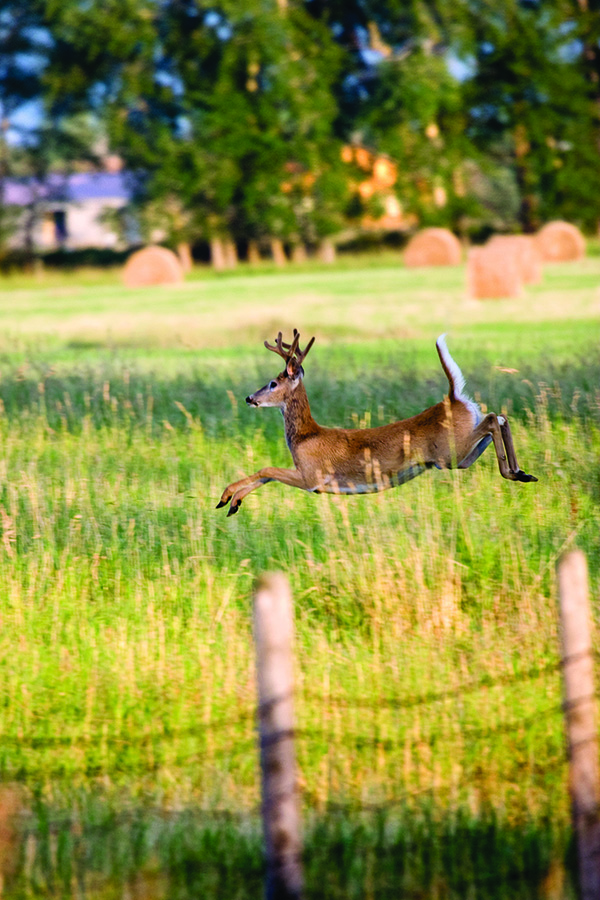 Bow vs. Rifle
Bow vs. Rifle
With whitetail deer, this is generally a matter of personal choice. In Montana, the general rifle season is during the whitetail’s rut, which gives the hunter an extra advantage. However, many of the river-bottom areas where whitetails live lend themselves to archery equipment and short-distance shooting. In prairie areas, archery equipment can provide an extreme challenge and the rifle hunter has a definite advantage.
Pack-Out
As with many other game species in Montana, if a hunter wants to get away from the crowds, hiking far from access points is a good option. For the whitetail hunter, this will mean a good sturdy pack and some familiarity with field-dressing. A good pack should be able to handle a fully boned-out whitetail deer in one trip. If you don’t want to do that much knifework, it’s not too much of a stretch to get a quartered deer out in two trips. Depending on terrain and a hunter’s strength and stamina, a whitetail can be dragged out with a sturdy rope or strap.
However, it’s important to get your animal cooled down and out of the field as quickly as possible if the weather is warm. Make sure before you pull the trigger or release the arrow that you have a plan for getting the critter taken care of.
Rut
Whitetails in Montana typically rut in early November through Thanksgiving. The peak time is somewhere in between and can vary a little depending on where you’re at. There’s no clear date for the rut to begin and end, but in general these are good guidelines.
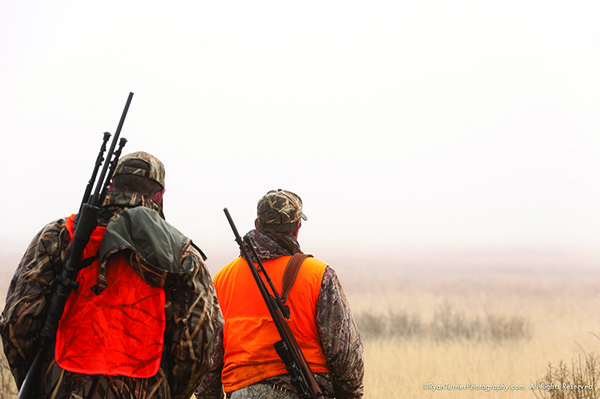
During the rut, bucks get very active searching for does and breeding those in estrus. At this time, if you find does, it’s a safe bet there’s a buck close by. And while the bucks may be actively cruising around looking for does, the does themselves generally keep a fairly predictable routine between feed, water, and bedding grounds. Monitoring those travel routes and areas will often be a good technique to find bucks.
Rutting whitetails can be active all night, so it’s not uncommon to have action right at first light. In some areas where deer get hunting pressure, mature bucks may move to more secluded areas before daylight as a precaution. In river-bottom areas, finding good game trails or bedding areas and setting up on those spots in the pre-dawn darkness, either in a ground blind or tree stand, can be productive.

Regs
In Montana, there are no special licenses for whitetails. They can be hunted through the general bow and rifle seasons. However, in some hunting districts, does can be hunted into January and hunters can purchase more than one antlerless permit, so it’s critical to know the regulations for where you want to hunt. Visit fwp.mt.gov for specific information about Region 3.
Greg Lemon is the information bureau chief for Montana Fish, Wildlife & Parks. This article originally appeared in Stalk hunting guide, an annual guide to hunting in southwest Montana.

